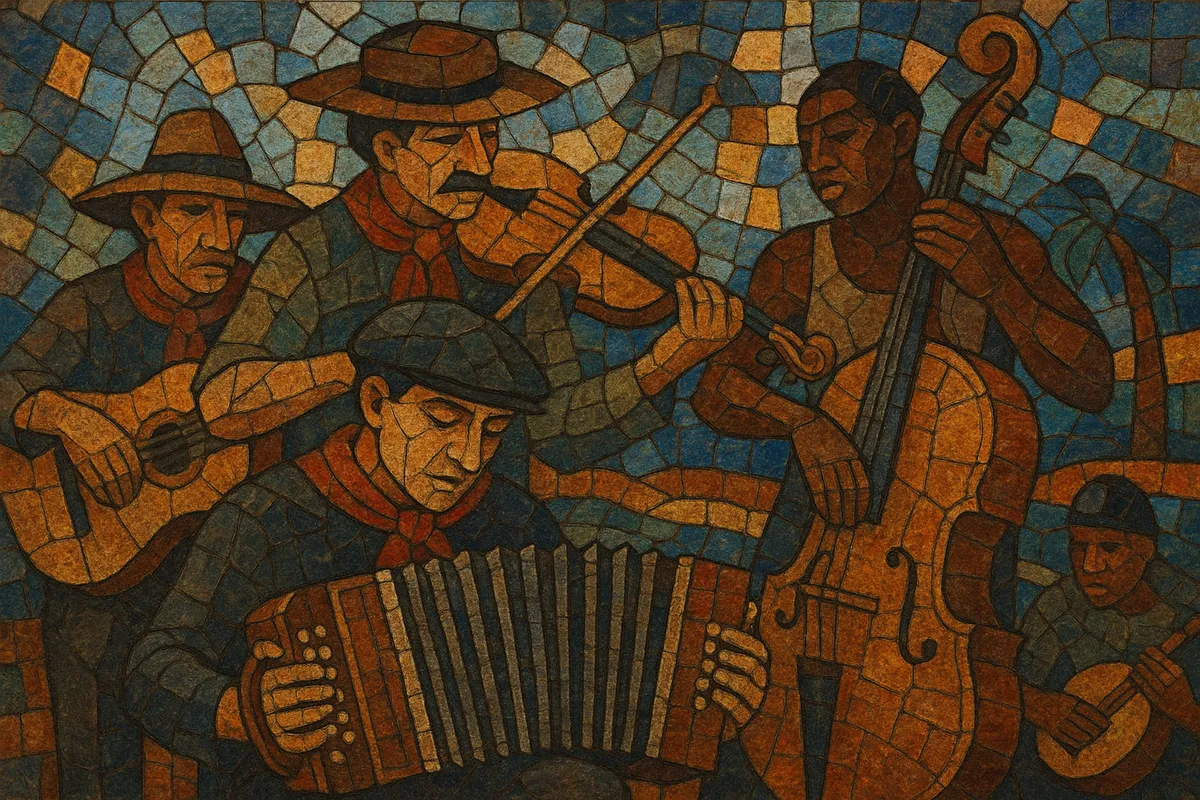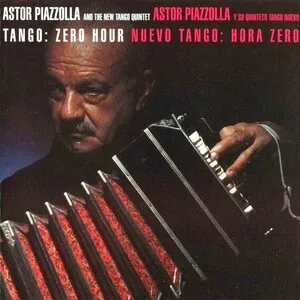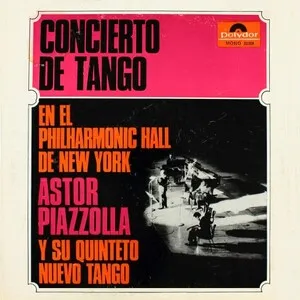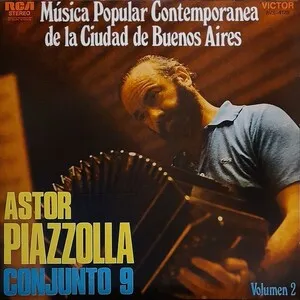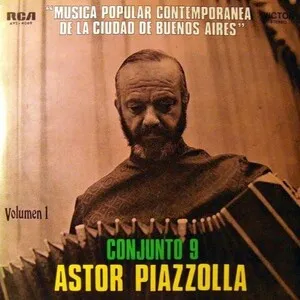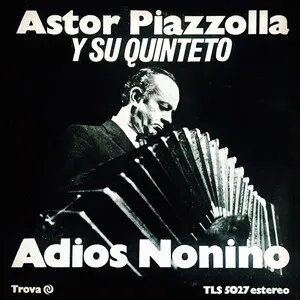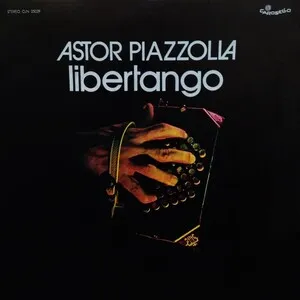Rioplatense music refers to the musical traditions that emerged around the Río de la Plata basin—centered on Buenos Aires (Argentina) and Montevideo (Uruguay). It blends Afro-Uruguayan rhythms, gaucho song forms, and a wide palette of European immigrant dances and salon styles into a distinctive urban sound.
At its core are tango, milonga, and candombe, whose characteristic syncopations, bittersweet melodies, and expressive performance practices (rubato, arrastre, canyengue swing) embody the region’s cosmopolitan yet local identity. Typical ensembles feature bandoneón, violin, piano, double bass, and guitar, while rhythmic foundations often trace back to the Cuban habanera and Afro-Uruguayan drum patterns. Lyrics frequently use lunfardo (local slang) and dwell on love, longing, night life, migration, and urban nostalgia.
The Rioplatense sound crystallized in the port cities of Buenos Aires and Montevideo during waves of European immigration. Afro-descendant communities preserved candombe drum traditions, while rural gaucho practices such as the payada and the milonga criolla interfaced with urban salon dances—polka, mazurka, and waltz—brought by Italian, Spanish, and other European migrants. The habanera’s habitable syncopation became a rhythmic blueprint, converging into early forms of tango and milonga.
Ballrooms, radio, and records propelled Rioplatense music into global consciousness. Orquestas típicas, featuring bandoneón-led arrangements, refined tango’s phrasing (arrastre, rubato) and marcato grooves. Singers and bandleaders achieved iconic status, and the repertoire expanded with sophisticated harmonies and orchestration, making the region’s music synonymous with urbane elegance and emotional depth.
While tango endured, Montevideo’s candombe entered a new phase via carnival and street ensembles, and singer-songwriters revitalized the milonga with poetic social commentary. Rock and pop scenes in Argentina and Uruguay incorporated local rhythms, timbres, and themes. Astor Piazzolla’s innovations (“nuevo tango”) fused classical and jazz idioms, reharmonizing tango and expanding formal and timbral palettes.
Rioplatense music remains a living ecosystem. Electrotango, jazz-tango hybrids, and crossovers with indie/rock coexist with traditional tango salons and candombe comparsas. Festivals, dance communities, and conservatories on both shores sustain performance practice, while global artists continually reinterpret Rioplatense aesthetics for new audiences.

